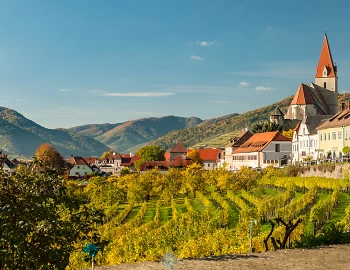Cistercien Rosé 2021
QwT Niederösterreich, Schlosskellerei Gobelsburg, 750 ml

| Grape variety: | Zweigelt, Saint Laurent, Pinot noir |
| Producer: | Weingut Schloss Gobelsburg |
| Origin: | Austria / Niederösterreich / Kamptal |
| Other vintages: |
Description
Without a doubt a rosé full of character with a pronounced structure and good taste intensity. Its scent reminds of ripe strawberries, ice-cream sweets and mint. Satisfying and juicy on the palate with its pronounced berry aroma. It has what it takes to become the summer's favourite wine.
Attributes
| Origin: | Austria / Niederösterreich / Kamptal |
| Grape variety: | Zweigelt, Saint Laurent, Pinot noir |
| Label: | Vegan |
| Ripening potential: | 1 to 3 years after harvest |
| Drinking temperature: | 10 to 12 °C |
| Food Pairing: | Vegetable dip, Whitefish fillets à la meunière, Cheese board, Calamari alla romana, Salad with vegetables, pulses, pasta |
| Vinification: | fermentation in steel tank, pressing the whole grape |
| Harvest: | hand-picking, strict selection, in small boxes |
| Maturation: | in steel tank |
| Bottling: | filtration |
| Volume: | 12.0 % |
| Note: | Contains sulphites |
Weingut Schloss Gobelsburg
The first written evidence of Schloss Gobelsburg dates from 1074, but it was in 1171 that the Cistercian monks from the Zwettl monastery obtained the first vineyards at Heiligenstein and at Gaisberg in the Kamptal. Visitors entering the baroque-style complex built on a slight mound sense this tradition, this spirit, this experience accumulated over the centuries. The view takes in all the surroundings, from the village of Gobelsburg to the vine-covered hills of Heiligenstein. Inside, near the parish church where couples say yes for life, when the weather is pleasant, the pretty and romantic garden invites all to rest for a while.
Grüner Veltliner and Riesling cover most of the countryside, while Zweigelt, Pinot Noir, St. Laurent and Merlot occupy about a quarter of the surface. Production guidelines are strict, and the winegrowing has adapted to the latest developments while still respecting the methods practiced by the monks. Wines are vinified and aged exceptionally gently. The Gobelsburg team tries to obtain authentic wines which respect and express their origin’s personality and individuality. Michael Moosbrugger’s ingeniously simple idea illustrates this quest for progress: casks on wheels use gravity to avoid damaging the wine through pumping. The casks are made from wood from nearby Manhartsberg and not from popular French or American oak.
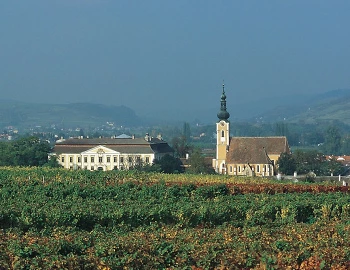
Saint Laurent
The grape with the halo
The berries of the Saint Laurent fade from the tenth of August, St. Lawrence’s day, the patron saint of chefs. In its homeland in Austria, the variety was formerly called Laurenzitraube. With its aroma of fresh sour cherries and elegant tannins, it appears to be a more powerful version of Pinot noir. However, the two are not related. The Saint Laurent is currently undergoing a boom. Its wines are deep-red, velvety, full-bodied and aromatic. Above all, the qualities from the oak barrels delight lovers of softer, fuller reds. Yet the largest cultivation area is not in Austria, but the Czech Republic. A little anecdote: the Saint Laurent lost its halo there during the Soviet era, and was allowed only to be called Vavrinecké instead of Svatovavrinecké.
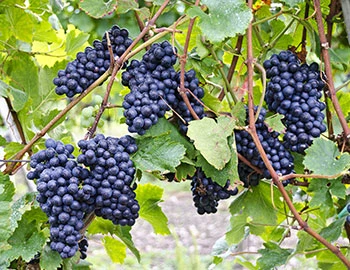
Zweigelt
Flatterer with a backbone
The Zweigelt is an Austrian original. Fritz Zweigelt crossed it in 1922 at the Klosterneuberg Orchard and Viniculture School ("Obst- und Weinbauschule Klosterneuburg") from the red varieties Blaufränkisch and Saint Laurent. Zweigelt's main quality is being marvellously drinkable. With its exuberant berry fruit and juicy structure, it fits like no other to the pleasurable lifestyle of our Austrian neighbours. One thinks, for example, of a hearty Brettjause in the wine tavern. It can, however, also assemble well with other grape varieties, and expand in wooden barrels for more backbone. No wonder it is the most planted grape variety in Austria. One curiosity: the Japanese island of Hokkaido grows 230 hectares of Zweigelt.
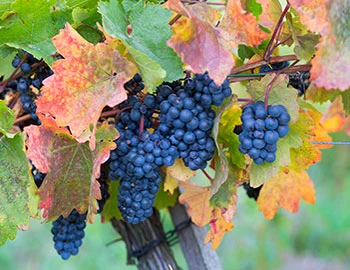
Pinot noir
Blueprint of the terroir
No other variety expresses its terroir as precisely as Pinot noir. It is a sensitive, fragile grape. But when it succeeds, it gives the world some of its very greatest wine plants. It especially excels in Burgundy, where it has been cultivated for at least 700 years. Even in the middle ages, it was considered so precious that it was kept separate from other grapes so as to not diminish its value. The finest examples are delicate and fragrant with aromas of cherries and red berries. With maturity, notes of forest floor, leather and truffles enter as well. An irresistible fruity sweetness still shines through, even after several decades. The Pinot noir does well in cool locations: in Switzerland and in Germany, where it is known as Blauburgunder and Spätburgunder respectively; in Alsace and in South Tyrol, in Oregon, New Zealand and Tasmania. Not least, it yields fantastic champagnes. It is a wonderful culinary companion. With its soft tannins and charming bouquet, it meshes with everything, from Güggeli and cheeses to fried fish.
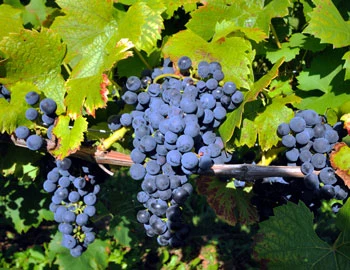
Kamptal
Kamptal: a dynamic atmosphere north of the Danube
With an ever-growing number of leading vintners, Kamptal has increasingly stood out in recent years from the shadow of the legendary Wachau region. The basis for this are the various terroirs in this broad-ranging valley. At Loisium, the region is also host to a spectacular, futuristic visitor center.
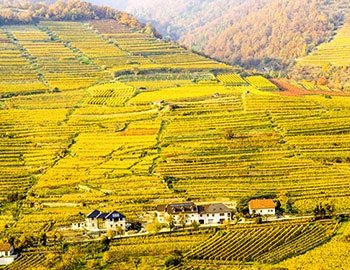
Niederösterreich
Lower Austria: crus near and far from the Danube
Austria's largest state is also its largest wine region. 46,000 hectares are planted with vines in Lower Austria. It is a heterogenic wine region, consisting of eight wine growing areas. While white varieties like Grüner Veltliner and Riesling dominate in the areas north and west of Vienna, red varieties set the tone in the south and in the southeast (Thermenregion and Carnuntum). The internationally famous white crus from Grüner Veltliner and Riesling develop in the picturesque Wachau and Kamptal.
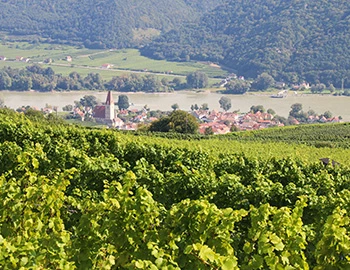
Austria
Austria – Sumptuous culture, accessible to all
Austria is characterized by unbelievable topographical diversity. A flat steppe in the east, forests and hills in the Alpine regions, wetlands and Mediterranean landscapes in the south. This in addition to a rich tradition and even greater love. It’s no surprise that the Romans found joy on this patch of Earth and cultivated wine growing. Austrian wine is not abundant, but it is high quality.
